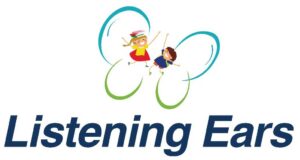Classroom Acoustics and ANSI Standard S12.60
The Challenge of Classroom Sound Quality
Daily, thousands of students nationwide struggle to comprehend 25-30% of classroom instruction due to poor acoustic conditions. Poor sound quality in learning environments significantly hampers students’ ability to clearly perceive their instructor’s voice, creating barriers to effective learning.
Understanding Classroom Sound Elements
Direct Sound
This represents the unimpeded path of a teacher’s voice from speaker to listener. Direct sound provides optimal speech clarity since it travels without interference from environmental factors, maintaining its original quality and distinctness.
Reflected Sound
Sound waves that bounce off surfaces before reaching the listener create reflected sound. These waves travel longer distances than direct sound, resulting in delayed arrival times. The impact on speech understanding varies depending on the duration of this delay.
Reverberation Time
The cumulative impact of all reflected sounds creates reverberation. Reverberation time measures how long these reflected sounds remain audible in a space. Shorter reverberation times enhance speech comprehension.
Background Noise
Unwanted sounds originating from external sources include playground activities, vehicular traffic, and aircraft. These sounds typically enter classrooms through windows. Internal sources such as HVAC systems and hallway noise also contribute to the acoustic interference within the building.
ANSI Standard S12.60 Requirements
The ANSI Standard S12.60 for Classroom Acoustics establishes maximum acceptable limits for both reverberation time and background noise to optimize speech understanding in educational settings.
Reverberation Time Limits
- Classrooms under 10,000 cubic feet: maximum 0.6 seconds
- Classrooms between 10,000-20,000 cubic feet: maximum 0.7 seconds (measurements taken in unoccupied, furnished spaces)
Background Noise Limits
Maximum permissible background noise level: 35 decibels (dBA)
Application Scope
These acoustic performance standards and design specifications apply to new classroom construction and moderate-sized learning spaces. The guidelines also extend to renovation projects where practically feasible.
Currently, ANSI standard compliance remains voluntary unless mandated by local codes, ordinances, or regulations. However, educational institutions may incorporate these requirements into their construction specifications for new facilities.
Supporting Research Findings
Iglehart Study (2016)
Frank Iglehart conducted research comparing speech perception abilities between children with cochlear implants and those with typical hearing across various acoustic conditions. The study tested participants under different reverberation times (0.3, 0.6, and 0.9 seconds) combined with varying speech-to-noise ratios.
Key findings using the Bamford-Kowal-Bench Speech-in-Noise Test:
- Both groups benefited from reverberation time reduction from 0.9 to 0.6 seconds
- Children with cochlear implants gained additional advantages when reverberation decreased to 0.3 seconds
- Children with typical hearing showed no further improvement beyond 0.6 seconds
- Sound booth testing significantly overestimated real-world classroom performance for cochlear implant users
These results validate the acoustic standards specifying 0.6-second reverberation time for typical hearing students and 0.3 seconds for students with hearing difficulties.
Additional Research Support
Historical studies by Finitzo-Hieber and Tillman (1978) demonstrated that children with normal hearing experienced improved speech perception when reverberation time decreased from 1.2 to 0.4 seconds, with no additional benefit from further reduction to 0.0 seconds.
Subsequent research by Yang & Bradley (2009) and others has consistently shown that lower reverberation times provide optimal conditions for speech understanding, with studies recommending times as low as 0.3 seconds (Neuman et al., 2010) or even 0.0 seconds in some cases.
“Children with cochlear implants or typical hearing can have trouble understanding speech in noisy classrooms. If your child is from Noida, you can meet a Speech Therapist in Noida, or if from Delhi, you can try Speech Therapy in Delhi to help improve speech perception.”
Compiled by: Suman S
References
- American National Standards Institute. (2002). Acoustical performance criteria, design requirements, and guidelines for schools (ANSI S12.60-2002). Melville, NY
- American Speech-Language-Hearing Association. (2016). Classroom acoustics
- Various research studies as cited in original document
Our Cochlear Implant Center in Noida provides post-surgery therapy and support for optimal outcomes.
Learn how hearing loss affects school performance and what support can help.
Understand parental attitudes towards hearing impairment to advocate better classroom environments.
